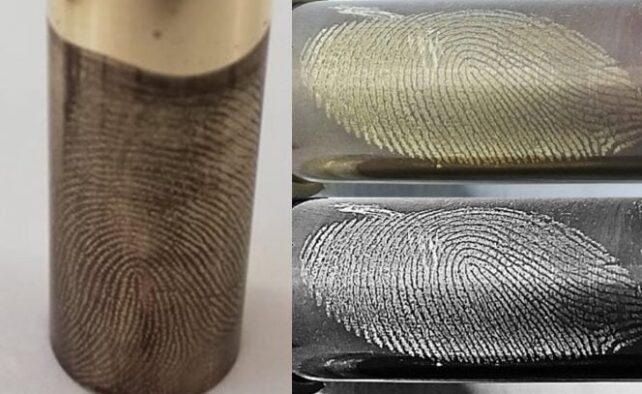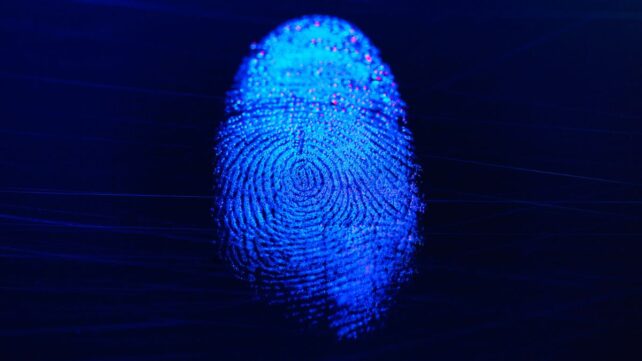Finding a fingerprint on the casing of a fired bullet was once a nearly impossible task. But scientists have at last achieved a breakthrough.
Researchers at Maynooth University in Ireland have now shown they can recover human fingerprints from super-heated bullet cases.
Even better, the prints appear at the "highest level of detail", including pores and ridges.
The details could be sufficient to identify a shooter, although in experiments, the bullets weren't actually shot from a gun; they were heated in a furnace.
Related: Scientists Discover a Hidden Clue to Tell When a Frozen Corpse Died
"The Holy Grail in forensic investigation has always been retrieving prints from fired ammunition casings," claims chemist Eithne Dempsey.
"Traditionally, the intense heat of firing destroys any biological residue. However, our technique has been able to reveal fingerprint ridges that would otherwise remain imperceptible."

The new technique, devised by Dempsey and her former PhD student, chemist Colm McKeever, still needs further testing, but the proof-of-concept was successful.
Their results suggest that not all biological residue deteriorates on a bullet casing after it is fired. Like invisible ink, some of it may remain.
Using a special chemical brew and a small amount of voltage, Dempsy and McKeever have now revealed that residue.
Their technique can even uncover fingerprints on bullet casings touched and heated, and stored more than a year before.

"Using the burnt material that remains on the surface of the casing as a stencil, we can deposit specific materials in between the gaps, allowing for the visualisation," explains McKeever, now at the Technological University of the Shannon in Ireland.
"With this method, we have turned the ammunition casing into an electrode, allowing us to drive chemical reactions at the surface of the casing."

Further testing will be needed to demonstrate that the technique works on a bullet actually fired from a gun.
Some evidence, for instance, suggests that the 'gaseous blowback' produced by gunfire is what erases most evidence of fingerprints, not just the high temperatures.
McKeever's and Dempsey's new forensics tool is an exciting development, but the quest for a 'holy grail' continues.
The study was published in Forensic Chemistry.
